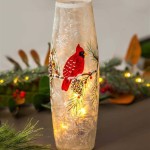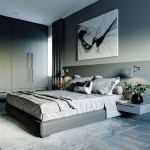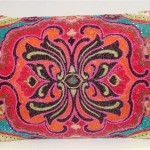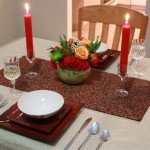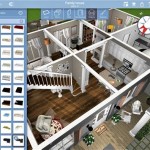The 4 Kinds of Decorative Design
Decorative design, often referred to as ornamentation or surface embellishment, plays a significant role in visual arts and design. It enhances the aesthetic appeal of objects and spaces, adding visual interest and expressing cultural or symbolic meaning. While diverse in its expression, decorative design can be categorized into four principal types: Naturalistic, Geometric, Abstract, and Stylized.
Naturalistic Design: This form of decorative design draws inspiration directly from the natural world. It involves replicating the forms of plants, animals, and other natural elements. Naturalistic designs aim for a realistic or lifelike representation of these subjects. Examples include floral patterns on wallpaper, animal motifs carved into furniture, or seashell designs incorporated into mosaics. The level of detail and realism can vary depending on the artist's skill and the intended effect, ranging from highly detailed botanical illustrations to more simplified representations of natural forms.
The popularity of naturalistic design fluctuates through different historical periods and design movements. For instance, the Art Nouveau movement heavily emphasized flowing, organic lines inspired by nature, showcasing a preference for naturalistic ornamentation. Conversely, movements like Minimalism often eschew naturalistic design in favor of simpler, geometric forms. The context of the design often dictates the appropriateness and effectiveness of naturalistic elements.
Geometric Design: Geometric design relies on mathematical principles and utilizes regular shapes such as circles, squares, triangles, and polygons. These shapes are often repeated, combined, and interlaced to create complex patterns. Geometric designs can be highly structured and symmetrical, offering a sense of order and balance. Common examples include tessellations, fretwork, and Islamic geometric patterns found in tiles and architecture.
The precision and regularity of geometric design have made it a prevalent choice across various cultures and time periods. From ancient Greek architecture to contemporary graphic design, geometric patterns continue to be utilized for their visual impact. The inherent simplicity of geometric shapes allows for easy adaptation and reproduction, lending themselves well to different mediums and manufacturing processes.
Abstract Design: Abstract design departs from direct representation of recognizable objects or forms. Instead, it focuses on the use of color, shape, line, and form in non-representational ways. Abstract designs can evoke emotions, suggest movement, or simply create visual interest through the interplay of these elements. Examples include abstract paintings, non-objective sculptures, and textiles with non-representational patterns.
The interpretation of abstract design is often subjective, allowing viewers to engage with the artwork or design on a personal level. The lack of specific representation opens up possibilities for individual interpretation and emotional response. Abstract design became particularly prominent in the 20th century with the rise of abstract art movements, influencing various design disciplines from fashion to interior design.
Stylized Design: Stylized design involves taking a recognizable object or form and simplifying or exaggerating certain aspects of its appearance. It retains the essence of the original subject but presents it in a non-realistic or altered manner. This can involve simplifying shapes, altering proportions, or emphasizing particular features. Examples include stylized floral motifs in Art Deco design, simplified animal figures in children's illustrations, or exaggerated human forms in certain tribal art.
Stylization allows designers to create unique visual interpretations while still referencing recognizable forms. The level of stylization can vary significantly, ranging from subtle modifications to highly abstracted representations. The choice depends on the desired aesthetic and the context of the design. Stylized design can be a powerful tool for conveying symbolic meaning or creating a specific visual style.
Understanding these four categories of decorative design provides a framework for analyzing and appreciating the diverse ways in which ornamentation is employed in art and design. While these categories are distinct, they are not mutually exclusive. Designers often blend elements from different categories to create unique and complex decorative schemes. The skillful application of decorative design contributes to the overall aesthetic impact and communicative power of visual works.
The application of these design categories also extends beyond purely decorative purposes. They can influence the functionality and user experience of objects and spaces. For example, geometric designs can be used to create structural stability, while naturalistic designs can evoke a sense of calm and tranquility in interior spaces. The interplay between form and function is a crucial consideration in the effective utilization of decorative design principles.
Finally, the cultural and historical contexts significantly influence the interpretation and application of decorative design. Specific motifs, patterns, and colors can carry symbolic meanings that vary across different cultures. Understanding this cultural significance is essential for designers seeking to create meaningful and culturally sensitive work.

Vector Circle Decorative Design Elements Set 4 By 123freevectors On Deviantart

Vietnam Traditional Patterns Vốn Cổ Việt Nam Huế Art Design Vietnamese Tattoo

Decorative Design Designs For Mosaic And Tesated Pavements 1842 Art Print By Owen Jones King Mcgaw

The Art Of Using Fonts In Elearning Design Atomi Systems Inc

Rangoli Mat With Decorative Design Options Of Flower Lotus And Om Shapes

Premium Vector Decorative Design Element Yin Yang Symbol In Linear Style On Black Background Sun And Moon With Star

White Metal Lasercut Decorative Panel For Residential

Premium Vector Flower Petals Decorative Design Element

4 6mm Clear Broe Titanium Glass Decoration Design Art Acid Etched Stained Frosted Decorative Window China Made In Com

Set Of Decorative Ilrated Words Autumn Winter Spring And Summer Colorful Typography With Design Elements Representing The 4 Seasons For Banners Cards Posters T Shirts Stock Vector Adobe
